MP Board Solutions for Class 9 Civics Chapter 2 – Constitutional Design
MP Board Solutions for Class 9 Civics Chapter 2 – Constitutional Design are essential for understanding how India’s Constitution was framed and the democratic ideals it upholds in the MPBSE curriculum. These well-structured answers help students grasp topics like the significance of the Preamble, the role of the Constituent Assembly, and key constitutional values. Designed as per the latest syllabus, these solutions strengthen conceptual clarity and improve exam preparation. Ideal for revision and practice, they encourage civic learning and critical thinking, making them a valuable study tool for scoring well in Class 9 Social Science exams.
MP Board Solutions For Class 9 Civics – Constitutional Design – Exercise Images
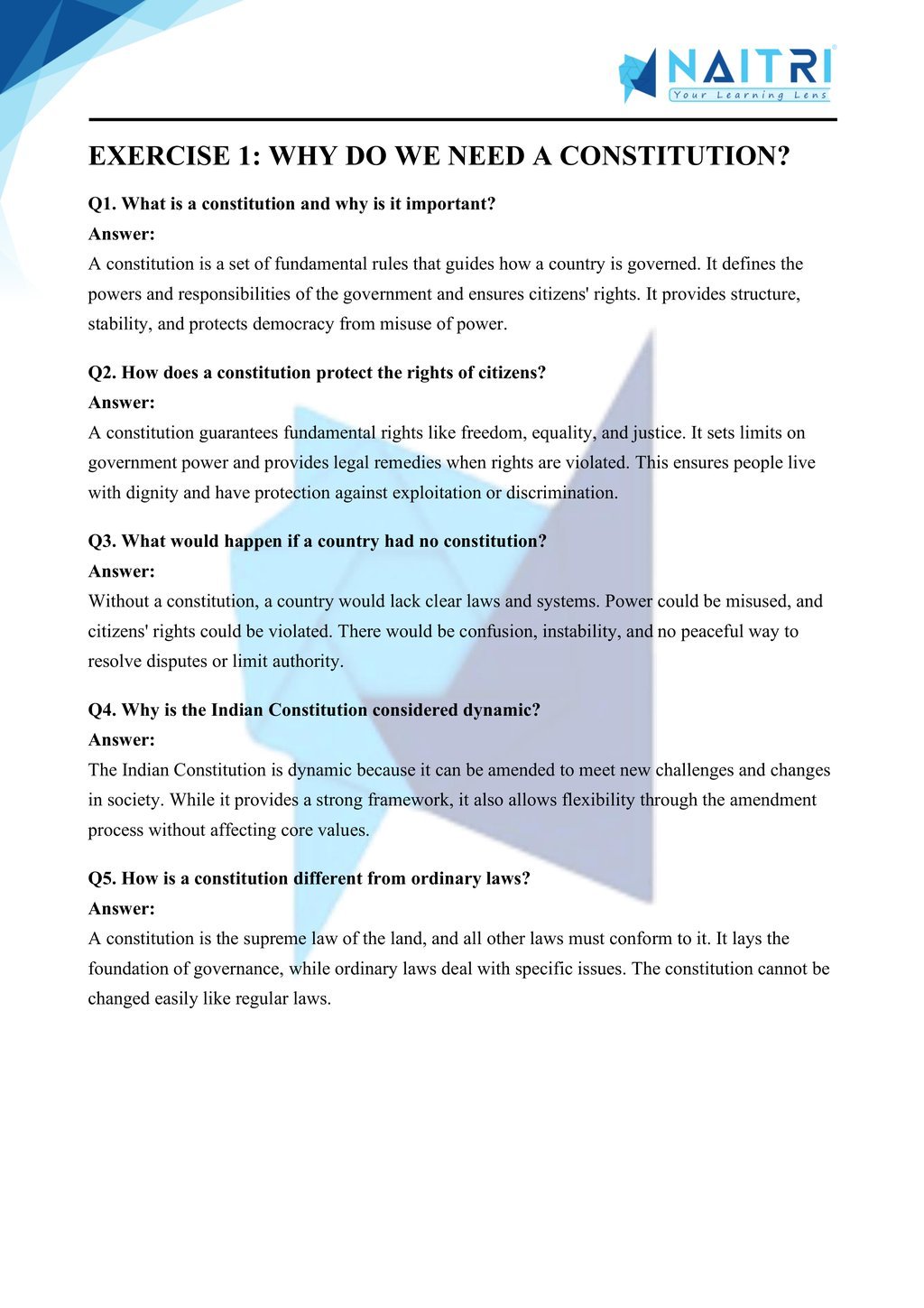
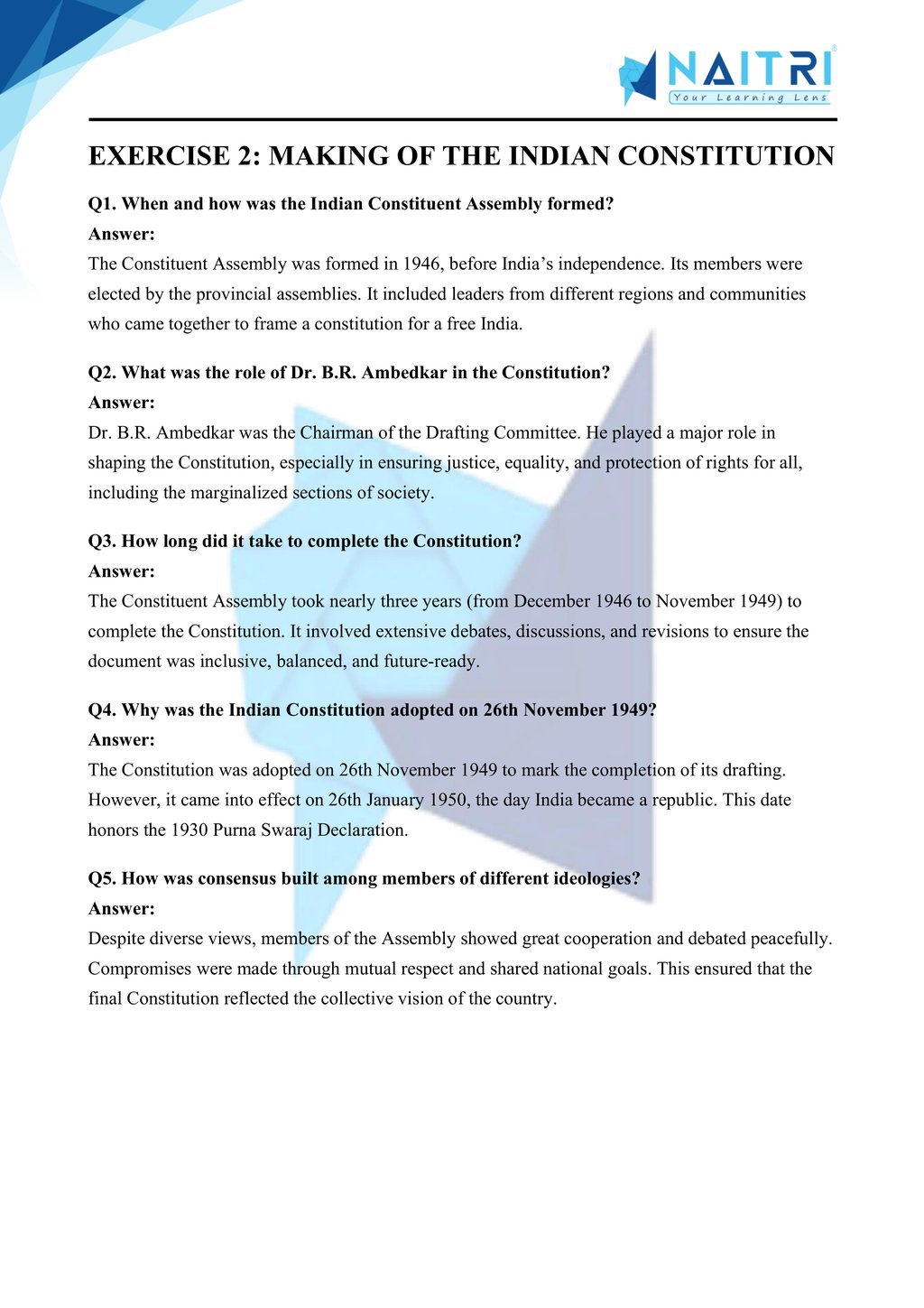
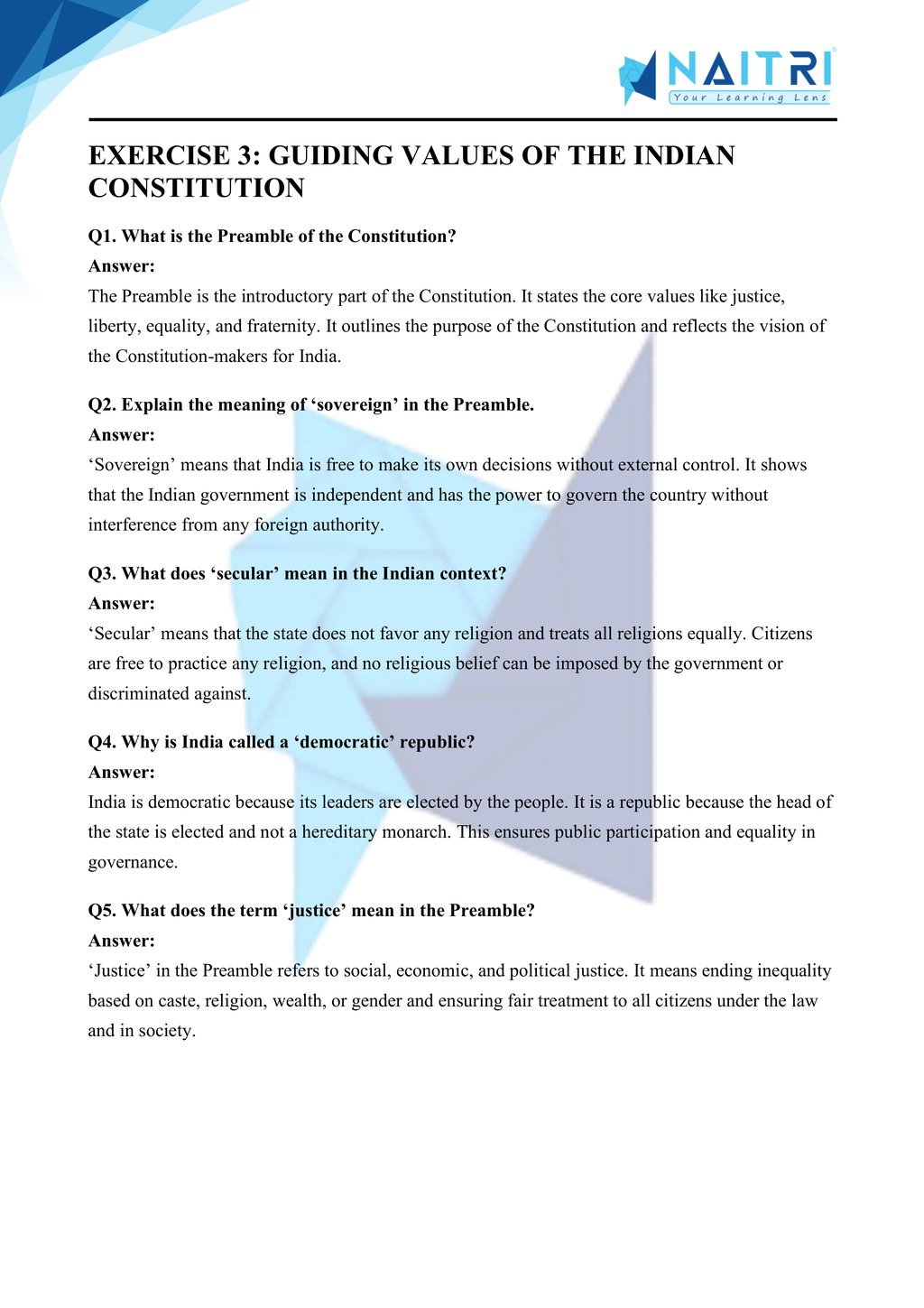
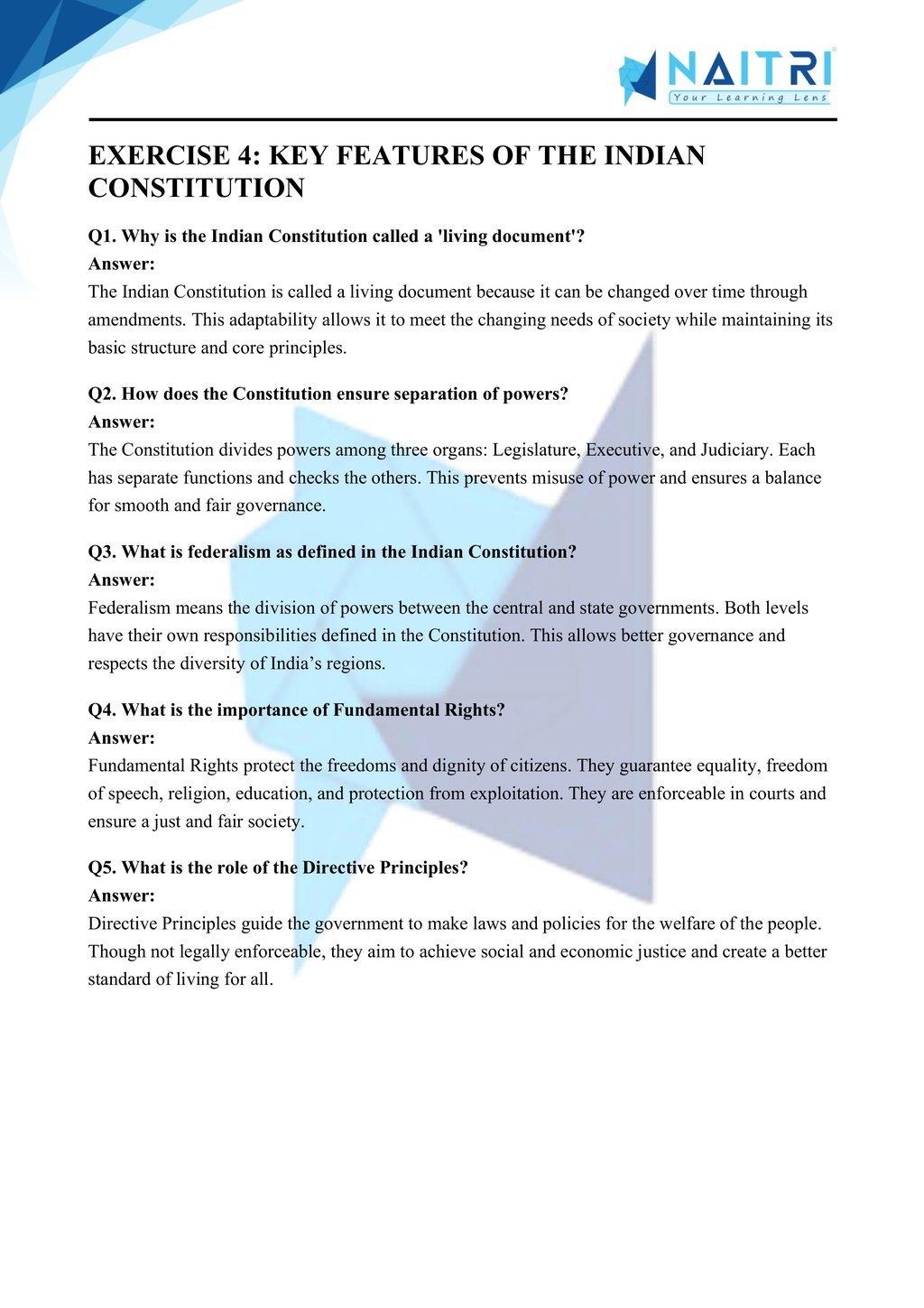
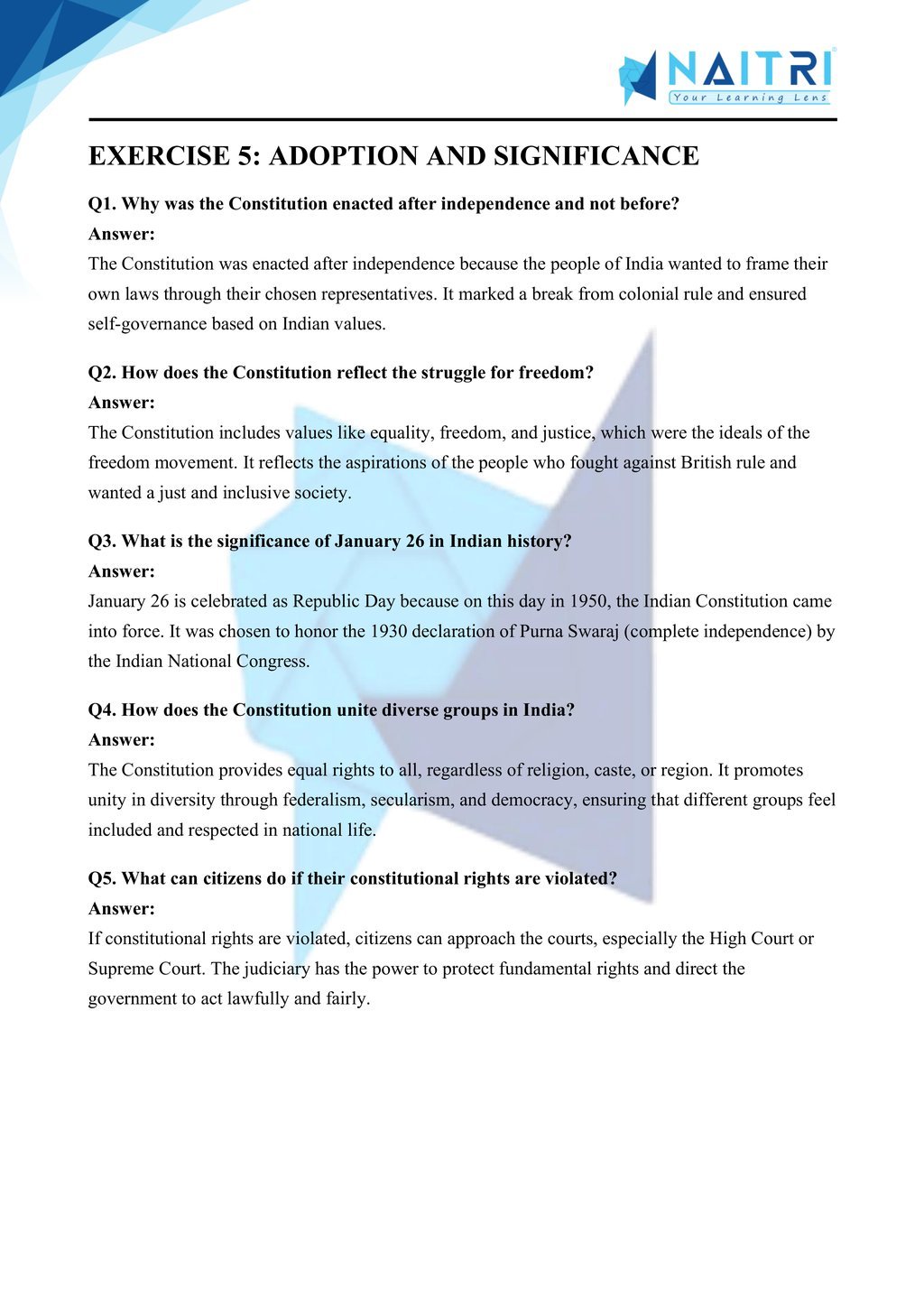
Experience Civics Like Never Before – With AR!
Understanding Constitutional Design is now more exciting and immersive! With the NAITRI App, you can explore complex civics concepts through Augmented Reality (AR). Watch nations rebuild, constitutions take shape, and foundational rights evolve — right in front of you. Our AR-powered lessons make learning interactive, 3D, and fun, helping you retain concepts better and enjoy every topic.



Visualize . Interact . Understand . The future of learning is here
Constitutional Design – Important Questions with Answers
What is a constitution?
Answer: A constitution is a written document that lays down the fundamental rules and principles for the governance of a country and citizens’ rights.Why does a democratic country need a constitution?
Answer: It ensures rule of law, limits government power, guarantees rights, and reflects the values and aspirations of the people in a democracy.Which body framed the Indian Constitution?
Answer: The Constituent Assembly, formed in 1946, drafted the Indian Constitution under the leadership of Dr. B.R. Ambedkar and other national leaders.Why was Nelson Mandela imprisoned?
Answer: Nelson Mandela was jailed for 27 years for opposing apartheid, a system of racial discriminationpracticed in South Africa by the white government.What was apartheid in South Africa?
Answer: Apartheid was a racist policy that segregated people based on skin color, giving rights and power only to the white minority.How did South Africa get its new democratic Constitution?
Answer: After years of struggle, both black and white leaders negotiated and agreed on a new Constitution based on equality and freedom.Who was the chairman of the Drafting Committee?
Answer: Dr. B.R. Ambedkar chaired the Drafting Committee. He played a vital role in shaping India’s Constitution and ensuring justice and equality.What are the key features of the Indian Constitution?
Answer: It ensures sovereignty, secularism, democracy, justice, liberty, equality, and promotes the unity and integrity of the nation.Why is the Indian Constitution considered unique?
Answer: It reflects India’s diversity, incorporates global best practices, and ensures fundamental rights, directive principles, and democratic values suited to Indian society.What does the Preamble to the Constitution declare?
Answer: The Preamble declares India as a Sovereign, Socialist, Secular, Democratic Republic and promises justice, liberty, equality, and fraternity to all citizens.What is the significance of the Preamble?
Answer: It expresses the philosophy and values of the Constitution. It acts as an introduction and guiding light for interpreting laws and rights.What do you mean by ‘sovereign’?
Answer: Sovereign means India is independent in making decisions about internal and external matters without interference from any foreign power.What is secularism in the context of the Indian Constitution?
Answer: It means the State does not favor any religion. All religions are treated equally, and people have freedom of religion.What is the meaning of ‘democratic’ in the Preamble?
Answer: It means people have the power to elect their representatives and government functions according to popular will and law.What does ‘justice’ mean in the Constitution?
Answer: Justice means ensuring fair treatment, especially social, economic, and political equality, removing discrimination, and providing equal opportunities to all.Why was the term ‘Republic’ included in the Preamble?
Answer: Republic signifies that the head of state is elected, not a monarch. It ensures equal participation and no hereditary rule.How was the Constitution adopted?
Answer: It was adopted on 26th November 1949 by the Constituent Assembly and came into effect on 26th January 1950, celebrated as Republic Day.What do you understand by ‘liberty’ in the Constitution?
Answer: Liberty refers to the freedom of thought, expression, belief, faith, and worship, allowing individuals to live with dignity in society.What does ‘equality’ ensure?
Answer: It ensures equal rights, opportunities, and protection under the law for all citizens, regardless of caste, religion, gender, or economic status.How is fraternity promoted in the Constitution?
Answer: Fraternity promotes brotherhood, unity, and national integration among all Indians, encouraging respect and harmony despite differences in language, culture, or religion.Why did India choose to adopt a written Constitution?
Answer: A written Constitution ensures clarity, transparency, and provides a legal framework that protects citizens’ rights and outlines government responsibilities.What inspired India’s Constitution makers?
Answer: They were inspired by ideas from the French Revolution, British parliamentary system, and American Bill of Rights, adapting them to Indian conditions.What are fundamental rights?
Answer: Fundamental rights are basic freedoms guaranteed by the Constitution such as right to equality, freedom, education, and protection of life and liberty.Why is the Indian Constitution called a living document?
Answer: It’s called a living document because it can be amended as per changing needs and continues to guide democratic governance.What is universal adult franchise?
Answer: It means every Indian citizen above 18 years has the right to vote, regardless of caste, gender, religion, or education.
Constitutional Design explains how a constitution is created and why it is essential in a democracy. Using the example of South Africa’s struggle against apartheid, students understand the values and vision behind India’s Constitution. The chapter introduces the Constituent Assembly, the Preamble, and the guiding principles such as justice, liberty, equality, and fraternity. It helps students appreciate how democratic values are safeguarded through constitutional design.
Download Naitri App
Easy, Visual Learning — Right on Your Phone
Learn with Augmented Reality! The Naitri app makes CBSE and MP Board concepts interactive and fun — even in low-resource settings. Watch lessons, complete homework, take tests, and track progress — all in one place. Anytime. Anywhere.
Available on








